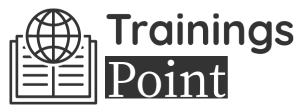One study reported that 86% of employees plan to pursue new jobs and employee turnover is on the rise and is expected to continue to worsen over time.
In addition, over 60% of companies report having difficulty recruiting key talent. Most companies see retention as a key strategic imperative but less than half have a specific retention plan. Unfortunately, most retention efforts are overly general, are expensive, and have a little positive impact on turnover.
Stay/retention interviews offer a specific, targeted, and effective solution to the turnover problem. Rather than throwing money at the problem this tactic gets at the source of the retention issues by determining why each employee is likely to stay or leave and then develops an effective plan to retain valuable employees. This webinar provides specific and useable tools for conducting stay interviews in your company. The core of the toolkit is actual interview questions in ten key areas. This process leads to a plan of action that increases the probability of retaining valuable employees. The Retention Toolkit gets at the source of the problem and allows managers and employees to work collaboratively to create a realistic plan of action.
WHY SHOULD YOU ATTEND?
Participants will learn the specific steps and receive the necessary materials to conduct an effective retention interview. Stay interviews are a proven method of decreasing turnover and increasing retention. Turnover across the country has been increasing and is expected to continue to increase resulting in increased costs and reduced company effectiveness. CEOs have identified employee retention as a critical business imperative and stay interviews offer a targeted and specific solution to turnover. Stay interviews have the benefit of increasing employee motivation, engagement, development, and empowerment. Retention interviews offer a targeted process for focusing retention efforts on high-impact employees. Stay interviews identify areas of retention risk and a proactive solution for managing that risk.
AREA COVERED
- Learn a system for tracking retention in relation to the risk of leaving and employee performance
- Understand the real cost of turnover
- Understand the factors of why employees stay and why they leave
- Understand the cycle of a retention plan and the important metrics to measure
- Understand the link between employee satisfaction, motivation, and engagement and how it relates to stay interviews
- Learn why retention interviews are vastly superior to exit interviews
- Learn how to hold managers accountable for retention
- Learn the 5 essential communication steps in the interview process
- Understand the process of using the retention interview toolkit
- Learn how to set the stage and actually conduct an effective interview
- Receive questions linked to the 10 essential retention factors
- Receive a toolkit for actually conducting stay interviews
WHO WILL BENEFIT?
- HR Leadership
- Staff
- Managers
- Supervisors
- Directors
- VPS
- CEO/President
- Board Members
- Any leader wanting to improve performance and reduce "the wrong turnover."
Participants will learn the specific steps and receive the necessary materials to conduct an effective retention interview. Stay interviews are a proven method of decreasing turnover and increasing retention. Turnover across the country has been increasing and is expected to continue to increase resulting in increased costs and reduced company effectiveness. CEOs have identified employee retention as a critical business imperative and stay interviews offer a targeted and specific solution to turnover. Stay interviews have the benefit of increasing employee motivation, engagement, development, and empowerment. Retention interviews offer a targeted process for focusing retention efforts on high-impact employees. Stay interviews identify areas of retention risk and a proactive solution for managing that risk.
- Learn a system for tracking retention in relation to the risk of leaving and employee performance
- Understand the real cost of turnover
- Understand the factors of why employees stay and why they leave
- Understand the cycle of a retention plan and the important metrics to measure
- Understand the link between employee satisfaction, motivation, and engagement and how it relates to stay interviews
- Learn why retention interviews are vastly superior to exit interviews
- Learn how to hold managers accountable for retention
- Learn the 5 essential communication steps in the interview process
- Understand the process of using the retention interview toolkit
- Learn how to set the stage and actually conduct an effective interview
- Receive questions linked to the 10 essential retention factors
- Receive a toolkit for actually conducting stay interviews
- HR Leadership
- Staff
- Managers
- Supervisors
- Directors
- VPS
- CEO/President
- Board Members
- Any leader wanting to improve performance and reduce "the wrong turnover."
Speaker Profile
 Bob Verchota
Bob Verchota
Bob Verchota, SPHR, is the President and owner of RPVerchota & Associates, a human resources and management practices consulting firm. He has over 30 years of human resources and operational leadership experience. His most recent corporate assignments include serving as VP Support Services, VP of Ancillary Services and Human Resources, and VP Human Resources. Focus areas include organization change and employee development, talent acquisition, risk management, compensation and benefits, labor and employee relations, performance improvement, and other operational issues. Academic pursuits include an undergraduate degree in Business Administration, graduate degree in Healthcare Administration (MHA), and doctoral work in Organization Development EdD …
Upcoming Webinars

How to Write Contracts for Procurement Professionals

How to Deal with Employees Who Love to Argue and Debate Eve…

Project Management for administrative professionals


Sunshine Act Reporting - Clarification for Clinical Research

Onboarding Best Practices for 2025: Proven Strategies to Po…

Transform Data into Insights: A Beginners Guide to Excel Pi…

Reprogramming your mind for Corporate Excellence: 4 Steps t…

Terminating Toxicity: Strategies For Leaders To Confidently…

ChatGPT and Project Management: Leveraging AI for Project M…

Uplifting the Credibility of HR: How to Build the Credibili…

How to Manage the Legal Landmine of the FMLA, ADA and Worke…

How to Write Effective Audit Observations: The Principles f…


Strategic Interviewing & Selection: Getting the Right Talen…


Onboarding Best Practices for Millennial and All Employees

Performance of Root Cause Analysis, CAPA, and Effectiveness…

Bridging Generational Divides in the Workplace


Emotional Intelligence: Mastering the Emotions of Great Lea…

FDA Audit Best Practices - Do's and Don'ts

2-Hour Virtual Seminar on How to Conduct an Internal Harass…

Accounting For Non Accountants : Debit, Credits And Financi…

Successful Strategies for FDA Expedited Pathways for Your D…

Regulation update Q1 2025: New and Proposed Regulations for…

Unlock Employee Loyalty: Stay Interviews Will Keep Them Eng…

Pay Transparency in Action: Strategies for Building Trust a…

Designing Employee Experiences to Build a Culture of Compli…


Reinvent Your Business with the Power of AI

Excel Lookup Functions: VLOOKUP, HLOOKUP, and XLOOKUP Made …

Developing and Implementing Quality Culture in the Organiza…

Tips and Techniques for Conducting an Effective Fraud Risk …

Break Free from Toxicity: Reclaim Your Power and Peace


Physician Employment Agreements: Problem Areas that can be …

Measure the Effectiveness of Compliance Programs by Engagin…

FDA Regulation of Artificial Intelligence/ Machine Learning

Quality Management Systems and Data Integrity

Implementing an Effective Human Error Reduction Program

Navigating 2025 Employment Laws: What Every Employer Needs …

Cleaning Data without Complex Functions - A Course for Data…


Succession Plan for 2025: It's Not Just for Emergencies - I…

Employers Should Prepare for Immigration Raids in 2025! Thi…

Managing Toxic Employees: Strategies For Leaders To Effecti…


Using High-Performance Coaching for Managers to Address Per…

